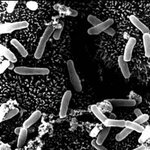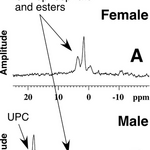Microbiology

A common hospital superbug called Clostridium has a protective coat of armor that can self assemble when put into a test tube on its own, which may have important commercial uses in nanotechnology, according to scientists.
Like many other micro-organisms, Clostridium difficile produces a lattice coat made of proteins to surround its cell wall and protect it like a suit of armour. The complete protein coat is then attached to the underlying cell wall with chemical bonds.
“We have discovered that these protein coats have a remarkable ability to self-assemble when they are taken off the bacteria…

In obese individuals, fat cells are bloated and inflamed because they receive too many nutrients, including lipids. In these cells, various components cannot work properly anymore and, instead, they activate new proteins to cope with the situation. One of the most challenged organelles in obese fat cells is a maze-like compartment called the endoplasmic reticulum (ER) that makes proteins and lipid droplets and senses the amount of nutrients that enter the cell.
Margaret F. Gregor and Gokhan S. Hotamisligil review current knowledge about how the ER works in fat cells and is modified in obesity…

The Johns Hopkins scientist who first showed that the absence of the protein myostatin leads to oversized muscles in mice and men has now found a second protein, follistatin, whose overproduction in mice lacking myostatin doubles the muscle-building effect.
Results of Se-Jin Lee’s new study show that while mice that lack the gene that makes myostatin have roughly twice the amount of body muscle as normal, mice without myostatin that also overproduce follistatin have about four times as much muscle as normal mice.
Lee, M.D., Ph.D., a professor of molecular biology and genetics, says that this…

Researchers at the University of Illinois at Chicago have discovered a chemical compound in male blue crabs that is not present in females -- the first time in any species that an entire enzyme system has been found to be activated in only one sex.
The research, performed using nuclear magnetic resonance, was published online Aug. 22 in PLoS ONE, the peer-reviewed, open-access resource from the Public Library of Science.
Although hormone level differences are generally accepted as the primary cause of variation between the sexes in animal and human development, the existence of a sex-…

The research group of Prof. Dr. Magdalena Götz at the Institute of Stem Cell Research of the GSF – National Research Centre for Environment and Health, and the Ludwig Maximilians University, Munich, has achieved an additional step for the potential replacement of damaged brain cells after injury or disease: functional nerve cells can be generated from astroglia, a type of supportive cells in the brain by means of special regulator proteins.
The majority of cells in the human brain are not nerve cells but star-shaped glia cells, the “astroglia”. "Glia means 'glue'," explains Götz. "As befits…

Certain types of bacteria have sunlight-sensing molecules similar to those found in plants, according to a new study. Surprisingly, at least one species—responsible for causing the flu-like disorder Brucellosis—needs light to maximize its virulence. The work suggests an entirely new model for bacterial virulence based on light sensitivity.
“The central message is that many bacteria have signaling proteins that contain the same light-absorbing domain as those found in the higher plants,” Briggs explains. “One of these is a vicious pathogen called Brucella. A species of Brucella is a serious…

97 million Americans are overweight or obese. Obesity is considered an epidemic these days. Could a virus be behind it?
Scientists have presented a new study showing infection with the adenovirus-36 (Ad-36) virus, long recognized as a cause of respiratory and eye infections in humans, may be a contributing factor.
Their laboratory experiments they showed that infection with Ad-36 transforms adult stem cells obtained from fat tissue into fat cells. Stem cells not exposed to the virus, in contrast, were unchanged.
They obtained adult stem cells from fatty tissue from a broad cross-section…

Stem cells transplanted into the brains of mice generate more numerous and more mature nerve cells if the brain cells called astrocytes are not activated. This discovery at the Sahlgrenska Academy is an important step forward for stem cell research.
The study was performed by a research team at the Center for Brain Repair and Rehabilitation at the Sahlgrenska Academy.
The transplantation of stem cells and activation of the body's own stem cells could be a future treatment for several neurological disorders.
"Intensive research is under way around the world to find ways to get stem cells to…

The discovery that eukaryotes, bacteria, and archaea coexisted 2.7 billion years ago came from chemical examination of shale samples, loaded with oily lipid remains of archaea found in a deep Canadian gold mine near Timmins, Ontario, about 400 miles north of Toronto. Previously it was thought that the three domains of life branched off around three billion years ago but being more specific was not possible.
Fabien Kenig, associate professor of earth and environmental sciences at the University of Illinois at Chicago, and his former doctoral student Gregory Ventura, spent nearly five years…

In their search for the cellular and molecular causes of multiple sclerosis, an Italian-German research team has identified a subgroup of protective immune cells (suppressor cells) which are strikingly reduced in number in patients with this nervous system disorder.
These suppressor cells are characterized by a specific surface marker, called CD39, and degrade ATP, an energy carrier released from damaged tissues. By this means, suppressor cells appear to be able to curb inflammation occurring in the central nervous system in the course of the disease.
With CD39, Dr. Giovanna Borsellino (…